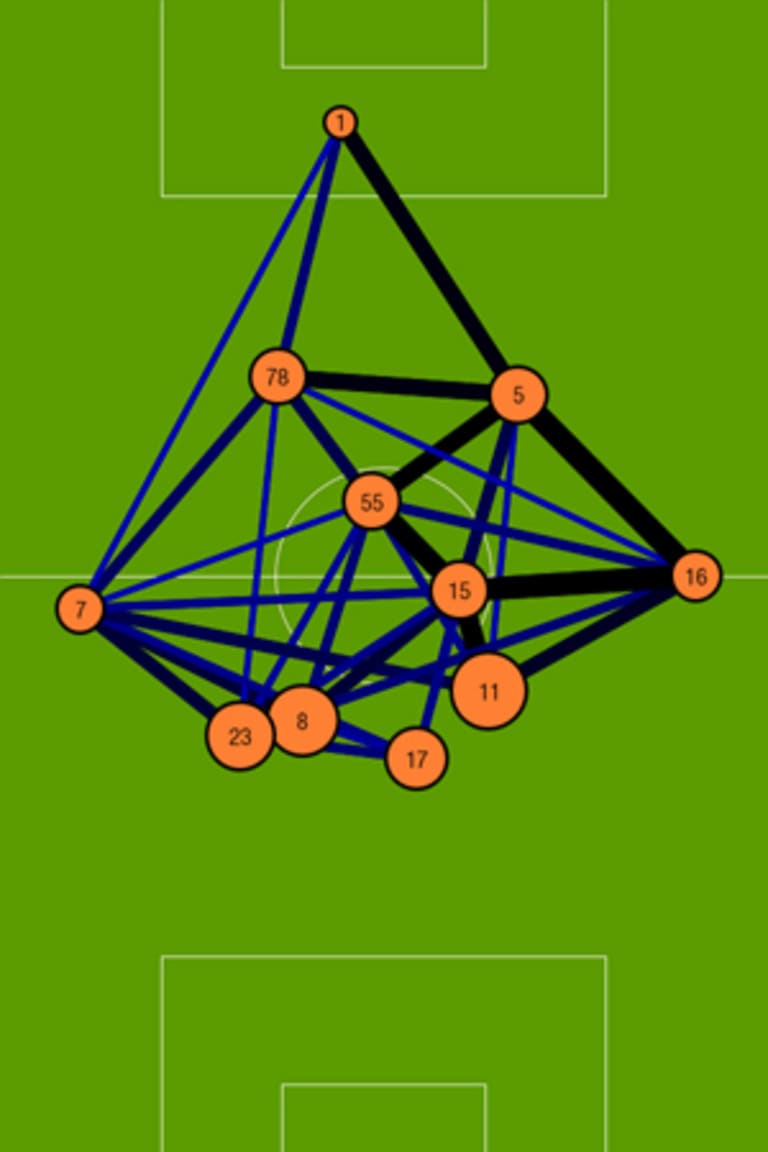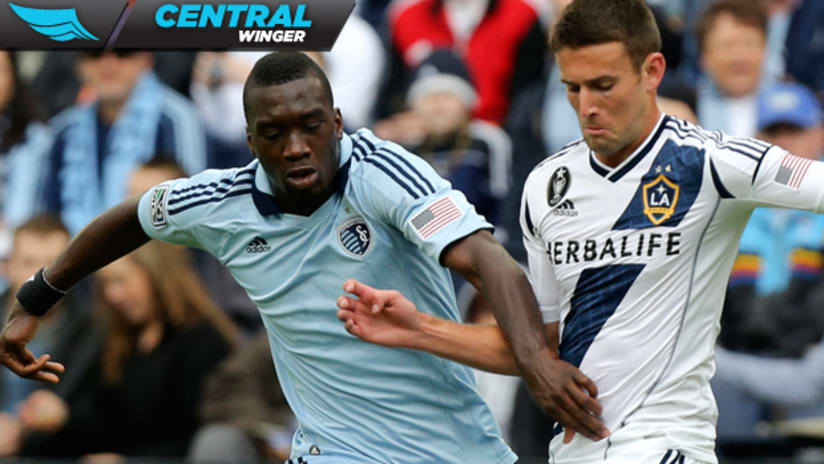Soccer is an exceptionally aesthetic game, more art than science some would say.
But we now have unprecedented ability to reduce it down to raw numbers, which means we can look at it in new, exciting (if you like math) ways. One of the industry leading ways to help visualize soccer statistics is what is known as a network passing graph.
By graphing each player by their average position on the field, and drawing lines between players — the thickness of the line being proportional to the number of passes exchanged between them — we get a very interesting snapshot of how a team preformed during a particular game.
In order to reduce the amount of noise in the visualization, there is a threshold of three passes for a line to be drawn. Also, the size of each player’s circle is equal to the positional deviation of that player over the course of the game.
For example, a player that deviated very little from his position (usually a goalkeeper, or a particularly immobile forward) will tend to have a very small circle. Conversely, a player who is involved all over the pitch (perhaps an energetic fullback, or a box-to-box midfielder in the Brad Evans mold) will have a larger circle.
These are the passing networks for Sporting Kansas City and the LA Galaxy during Sporting's 1-0 victory at Livestrong Sporting Park this past weekend. As always, it's seeded with data from the MLS Chalkboards powered by OPTA.


By glancing quickly at the pure volume of passing, it's very clear that Kansas City outpassed LA by a significant margin (480 to 310). Also, Sporting's passing is relatively well distributed while the Galaxy's was not. For example, the only player that Tommy Meyer (No. 21), LA's right center back, completed more than three passes with was his goalkeeper, Josh Saunders (No. 12).
Perhaps a byproduct of Sporting's high-pressure defense, covered in Monday's OPTA Spotlight, Chance Meyers (No. 7) and Seth Sinovic (No. 16) both played higher up the field than their holding midfielder Júlio César (No. 55).
Also, it was reported that Kansas City played a 4-2-3-1, but this visualization suggests that it could have perhaps be classified as something like a 4-1-1-3-1. Roger Espinoza (No. 15) played significantly higher up the field and well to the left of Júlio César. The Brazilian actually seems to have played closer to Bobby Convey (No. 11) than his defensive midfield counterpart.
Another clear difference between these two teams is how much wider Sporting managed to play in comparison to LA. Sporting's two fullbacks, Myers and Sinovic, provided a majority of SKC's width while their outside midfielders were considerably more pinched in than LA's outside midfielders.
Perhaps the most stunning difference is how much further up the field Sporting played in comparison to the Galaxy. Here is an important distinction that needs to be made with these kinds of observations in the context of this kind of analytics: Do Sporting play further up the field because they are winning? Or do Sporting win because they play further up the field?
These kinds of visualizations do not aim to answer these questions, but rather provide you with extra context so you can make the conclusions yourself.
Devin Pleuler is a computer science graduate from Wentworth Institute of Technology in Boston, where he played on the men's varsity team as a goalkeeper. He's certified as a coach through both the USSF and NSCAA, and writes the Central Winger analytics column for MLSsoccer.com.










